Sacramento State’s LGBT community is large and always growing, as is the same for universities across the U.S. and the world. In the ten years since its opening, the PRIDE Center on campus has brought in generations of LGBT members as workers, and more as members and supporters. We spoke to seven students on campus, some who work for PRIDE, about their lives.
KIANA MEDINA
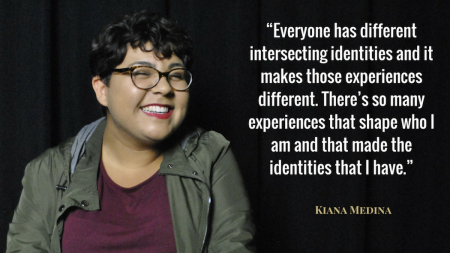
When she is not helping to plan programs for the PRIDE Center, Medina will be at the front desk helping students learn about different LGBT identities and guiding them toward finding their own identities.
Medina first declared she was pansexual in her eighth grade year. After her mother replied that she could not be attracted to (cooking) pans, Medina said that she did not want such invalidation and decided to identify as bisexual in her junior year of high school. It was not until her senior year that she identified as queer.
She described her three-year search for an identity as a curse and blessing, as it led her to experience different LGBT communities.
Pansexualilty is a sexual orientation that describes a person who is attracted to people of all gender identities, not just men and women. Bisexuality refers to when a person is attracted to men and women.
After she felt the common definition of “bisexual” was imposed on her, Medina later identified as queer.
For Medina, gender does not a play a role when it comes to attraction. She said that identifying as queer gave her more freedom, as she was able to define herself instead of others defining her.
“Certain people identify a certain way and so, when they have a set definition in their mind, anything that strays away from that definition they’re like, ‘Well, that’s not bisexual,’ ” Medina said. “It just felt like there were so many labels and I had to fit so many expectations, I don’t think that my identity really fits inside a rigid box because my identity is really fluid.”
In addition to being queer, Medina is of black, white and Mexican descent. She is also an 18-year-old Christian woman who was born and raised in Fresno. Medina said all of these cultural backgrounds helped shape her identity and her experience growing up LGBT.
As a panelist on “Identity Narratives,” the PRIDE Center’s most popular classroom presentation, she tells students that everyone’s struggles or lack of struggles may vary because of their different cultural experiences.
“I’m completely and utterly blessed — I have a very accepting family, but there are different things that people go through,” Medina said. “Everyone has different intersecting identities and it makes those experiences different. There’s so many experiences that shape who I am and that made the identities that I have.”
One of Medina’s favorite responses that she receives from students at “Identity Narratives” is when they tell her that the panel helped them find their identity and that they initially had no idea there was a word for it.
“It’s just really touching because I’m like, ‘OK, you’ve obviously been trying to figure this out and now you have words for it and that’s amazing,’ ” Medina said. “Vocabulary is awesome, words have such power.”
ALEX BESKEEN
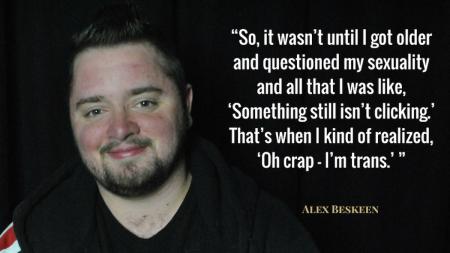
As a student program assistant, Beskeen’s main task is to oversee the PRIDE Center’s academic engagement presentations, a service that brings LGBT students to present in classrooms per the request of professors. Beskeen trains student volunteers for upcoming presentations and communicates with professors.
As one of the “Identity Narratives” panelists, Beskeen shares his experiences with being transgender. He described transgender individuals as people who do not not identify with the gender that they were assigned at birth.
Those who do not feel comfortable in their bodies, like Beskeen, may decide to physically transition from their assigned gender to fit the gender they most identify with.
Five months after Beskeen told his family he was transgender, he started hormone therapy at 19. He later had his name and gender legally changed and underwent a double mastectomy.
Beskeen said that the reason he did not realize he could be transgender sooner was because his family was not rigid when it came to gender roles. Since he was a child, he dressed in clothes from the boy’s section and played with traditionally male toys. He described his mother as a tomboy, and said that his family may have thought that he was just a tomboy.
“When I was a kid, (my family) never made me feel like there was something wrong with me — they normalized it, basically,” Beskeen said. “So, it wasn’t until I got older and questioned my sexuality and all that I was like, ‘Something still isn’t clicking.’ That’s when I kind of realized, ‘Oh crap — I’m trans.’ ”
Although Beskeen said his parents are accepting and progressive, it still took them a while to get used his transition, as it was something new to them. His mother learned more through books and by talking to other parents.
He describes his father as an old-fashioned, military man who came from the typical “1950s American dream family,” as Beskeen’s father grew up with his father going to work and his mother staying home to care for their children.
“He has some very old-fashioned views about things and it took him a lot longer (to accept my transition),” Beskeen said. “I was the only girl, so it felt like he was losing a daughter, but he eventually came around and now he’s fine with it.”
Prior to working at the PRIDE Center, Beskeen had only read or heard about people of different LGBT identities. Now, he interacts with them on a daily basis.
Beskeen said that this is the reason why “Identity Narratives” is an important program, as it allows people who are not familiar with LGBT people to meet and talk with those who are LGBT.
“Coming from my standpoint where I didn’t know people who had these (identities), it does kind of (help) open your eyes,” Beskeen said. “It puts a face to a word that you just read and gets their perspectives and the struggles they deal with, which might be different from mine.”
PATRICK DORSEY
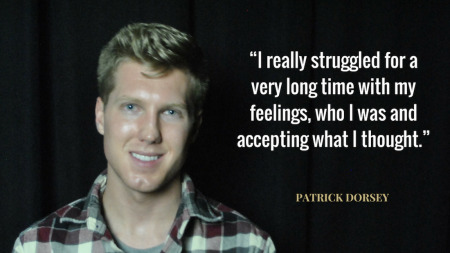
Dorsey identifies as gay, a part of him that took almost 18 years to find as he struggled with depression and denial.
He is from Redlands, a Southern California town with a community Dorsey described as close-minded and lacking in diversity and inclusivity.
“Being in this type of community and being from a religious background as well — I didn’t think it was OK to be gay,” Dorsey said. “I really struggled for a very long time with my feelings, who I was and accepting what I thought.”
Dorsey spent the majority of his junior year in the hospital and went through intensive therapy for depression. Even after he graduated high school and attended community college, his depression persisted. As a result, his grades dropped dramatically and he was placed on academic probation.
Crafton Hills Community College did not have an LGBT center, but Dorsey joined the student government, where he found friends and faculty who were fighting for equality and educational outcomes. He credits them for helping him accept his identity.
“We’re all very diverse (and come from) all different walks of life,” Dorsey said. “I think we all accepted each other and that made me comfortable with accepting me for who I was.”
He said that his time in student government made him challenge himself to show that there were LGBT leaders in the local community. He switched his major from biology to government and transferred to Sac State, where he eventually became president of Associated Students, Inc. He is currently a first-year master’s student in the public policy and administration program.
“I’m the happiest I’ve ever been,” Dorsey said. “I am thankful to live in Northern California, where I think it’s a lot more accepting than where I’m from, even to this day. I feel more open and confident and I think my personality and my self-esteem has changed.”
While Dorsey does not personally use the PRIDE Center, he said that it was a resource he could have benefited from when he was still coming to terms with his identity.
“I think (the PRIDE Center) helps those people that were in that position that I once was in,” Dorsey said. “It helps students from the (LGBT) community come to terms with themselves, accept who they are and understand that there are people who are there for them and actually care about who they are.”
Looking back at the last 10 years, Dorsey said he would have had no idea that marriage equality would ever come to pass. Nine years ago, California passed Proposition 8, which repealed same-sex marriage in the state after it had been legalized by the California Supreme Court.
“I think the last 10 years have been really transformative,” Dorsey said. “Laws have changed, and I think there’s more people who are out. I can’t believe how many transgender people are gracing the covers of magazines. I think — God, that would have been unheard of in 2007. I don’t think I’d ever met a transgender person 10 years ago.”
JASMIN FERNANDEZ
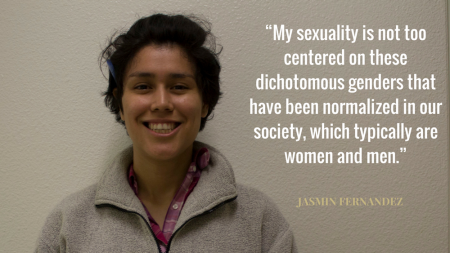
Fernandez first realized she was attracted to people of the same gender when she was a child in preschool, but said that she suppressed those feelings due to others reacting negatively.
Even when she had a boyfriend in high school, Fernandez still found herself attracted to women. It was not until college that Fernandez identified as pansexual, a sexual orientation that describes people who are attracted to people regardless of their gender identities.
Fernandez said that a common misconception is that being pansexual means that she is attracted to everyone.
“What pansexuality to me means is essentially being attracted to folks of all sorts of various different genders and even agender individuals,” Fernandez said. “My sexuality is not too centered on these dichotomous genders that have been normalized in our society, which typically are women and men.”
Fernandez is also polyamorous and is currently in a non-monogamous relationship. She said that this relationship allows her and her partner to not close themselves off from others romantically, sexually or emotionally.
They are both allowed to see other people, as long as there is consent and communication that those pursuing them or whom they are pursuing are aware of their polyamorous relationship.
The household that Fernandez grew up in had a large religious influence. Fernandez described her family as old-fashioned, and that they followed their religion word-for-word in the Bible.
After she told her family of her pansexuality and polyamorous relationship, she said that her mother was disappointed that she was not going to follow the life they expected her to live.
Fernandez rejects the idea of getting married and having kids, and does not plan on doing so in her lifetime.
“It’s a very culturally Mexican, religious household,” Fernandez said. “I’m not even sure what the Bible says about homosexuality, to tell you the truth. I guess, their expectations for me (were) to get married through the church, have kids, be forever subservient to my husband and care for my children and family. All these things are, in my opinion, not very modern.”
In addition to working as a student program assistant at the PRIDE Center, Fernandez is also on the leadership team of Queer Union, an on-campus club created for members and allies of the LGBT community to come together and discuss social issues that LGBT people experience.
She said that spaces that foster marginalized groups like LGBT people are necessary on a college campus.
“General society perhaps is not totally, completely geared toward our success,” Fernandez said. “So, we make sure that there’s spaces for folks of marginalized identities to have a space to thrive in, socialize, learn about their identities and meet people who are also like them (who) experience similar experiences because of the identities that they carry.”
MYLO HENSCHEL
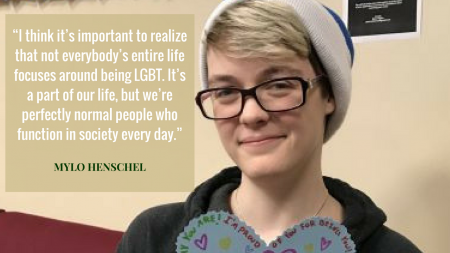
Henschel is a senior psychology major who uses the PRIDE Center to study, chat with friends, attend events or just relax between classes.
This semester, Henschel said they want to be more involved with activities at PRIDE Center and tries to attend every event they can. They like to help out and volunteers as a panelist on “Identity Narratives” as a way to give back to the center.
“I’m really grateful to have this space,” Henschel said. “I don’t think I’ve had a space like this where I can truly be comfortable and not worry that I have to not mention something about my identity. Especially regarding pronouns, since I prefer ‘they,’ ‘them,’ ‘their’ and I’ve had people ask me (about) that here. I’ve never met people who were just so genuinely kind and welcoming as I have here.”
Henschel identifies as asexual and is genderfluid. Their personal identity is fluid, meaning that they could feel more male, more female, or neither — which can change overtime. One way that Henschel expresses their gender fluidity is in the way that they dress.
For them, clothes are not tailor-made for specific genders. They mix and match clothes found in both the men’s and women’s department, which they said makes them appear more androgynous.
Asexuality is an orientation which describes a person who does not experience any sexual attraction.
According to a 2004 study conducted by psychologist and human sexuality expert Anthony F. Bogaert, roughly one percent of people are asexual.
Henschel said that its rarity may be the reason why many people are unfamiliar with asexuality, in part with the lack of education on the topic in schools. They said that they feel an obligation to share their identity narrative and the panel gives them the opportunity to educate people and broaden their views.
“All through high school I really thought that there was some kind of inside joke that I wasn’t in on,” Henschel said. “Everyone’s talking about hormones and feeling all these feelings for people and I’m like, ‘what, where?’ I really thought that they were joking because I didn’t feel any of that.”
Henschel first learned of the word “asexual” in their early 20s and credits Google for helping them find the asexual community online. At 22, they revealed their asexuality to their mother, who confused it with celibacy. While people can choose to be celibate, Henschel said that asexuality differs because it is a state where a person naturally feels no sexual attraction to others.
“I have romantic attractions to people and I develop deep emotional connections to people like any other relationship,” Henschel said. “The sexual component just never really occurs to me — I don’t have that physical desire for people.”
In January, Henschel became engaged to their girlfriend of four years. The pair met 10 years ago on DeviantArt, an online art gallery and community for artists and art enthusiasts.
They share a love of animation and film, and often wear matching accessories like knit hats imprinted with a rainbow shooting star and a blue pine tree — symbols of the main characters from the TV show “Gravity Falls.”
Henschel would like others to know that tragedy does not define the lives of LGBT people. In recent years, they have seen more representation of LGBT people in media that are portrayed in a more abstract light, rather than focusing on their struggles. Henschel cited “Sense8,” a sci-fi drama on Netflix, as a medium that shows LGBT people as what they are — people.
“One of the main characters (on ‘Sense8’) is a trans woman, but the story doesn’t focus on that — that’s just part of her character,” Henschel said. “I think it’s important to realize that not everybody’s entire life focuses around being LGBT. It’s a part of our life, but we’re perfectly normal people who function in society every day.”
CHRISTINE THAO
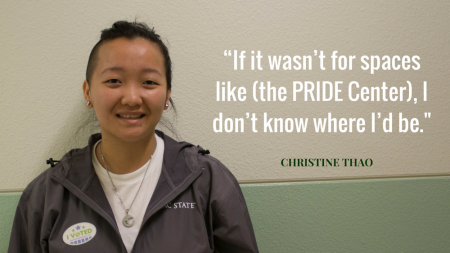
Thao identifies as lesbian and Asian Pacific Islander Queer (APIQ) and said that being Hmong-American comes with cultural expectations that often conflict with her being LGBT.
“If I’m out dating, I’m a lesbian so you know that my attraction is towards women — it makes it more clear in that sense,” Thao said. “The queer term used to be a derogatory term, and I want to be part of that movement where we reclaim that. Because it’s important to me as a LGBT person.”
She describes the Hmong culture as dependant on a patriarchal system. Thao said some factors that put her under pressure are the idea of “saving face” for her family and the idea that men are able to provide for women spiritually and through hard work and labor.
“With the Western LGBTQ groups, I feel like you can still be visible in the community,” Thao said. “For the API community, there’s a lot of factors that pressure us not to come out or be visible because of family expectations because there’s that big idea that men and women have to be married (to each other).”
While she was in her senior year of high school, Thao participated in “College Connections,” a program that allowed high school students to take community college courses. A class that caught her interest was queer film and literature. She decided to register for the class in order to learn more about the LGBT community.
“(The class) was really hard for me because I didn’t have an LGBT background,” Thao said. “Because no one has ever really taught me anything (and) I’ve never really learned anything about the LGBT community until I took this class. It was an eye opener, (for) who I was.”
Prior to this, Thao did not have a solid resource where she could learn about LGBT issues. She said that her queer film and literature class helped her want to engage more with the LGBT community, namely with API-based members.
Thao has since been involved in a number of organizations, including the Queer Union at Sac State and other groups off campus like Hmong Queer Suab, the Asian Pacific Islander Queer Sacramento Coalition and the Gay Straight Alliance at her former high school.
She currently works as a student program assistant at the PRIDE Center, where she sometimes leads events or participates as a special guest. She recently ran a workshop at APIQ Homecoming, a conference held during pride week. She credits the PRIDE Center for helping her become an activist for the LGBT community.
“(I would like to say) thank you (to the PRIDE Center), for offering me this space to grow and develop my identity within the LGBT community, within the API community and within myself,” Thao said. “If it wasn’t for spaces like this, I don’t know where I’d be.”
BILLIE HALE
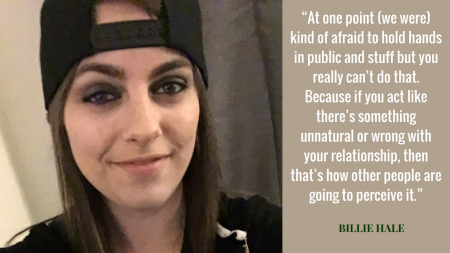
Hale described herself as being a big tomboy growing up, since she was not a fan of dresses and preferred to wear clothes that were more geared toward boys.
She first started dating boys when she was a teenager because she considered that the normal thing to do at that age. Hale said that her romantic relationships with boys felt false, as if she was acting like she was interested. It was not until a female friend confessed she had feelings for her that Hale reconsidered her sexuality.
Hale said that she felt happier and much more in her own skin after she declared herself a lesbian at 13 and began to exclusively date women.
“I felt like being in a relationship with a guy had so much pressure to it, it was more like society telling me that that was the norm — when it just didn’t feel right to me at all,” Hale said. “I didn’t have a lot of trouble coming out. I know a lot of people, when they do come out, sometimes they have issues with their family not accepting it and losing friends. For the most part, I’ve never had a negative experience like that.”
When Hale could not find a formal place on her high school campus to discuss issues with her LGBT peers, she decided to create her own resource and co-founded the Gay Straight Alliance in her junior year.
At Sac State, she became a peer health educator at Student Health and Counseling Services. Hale left the position a year later, but still helped to mentor peer health educators with their Safe Zone Training, a 3-hour training session aimed at creating safe zones on campus in people, organizations and departments.
“I’m really excited to see what the next 10 years look like,” Hale said. “I would like to — when I say I’m married, not (have) the other person assume that I’m married to a man. I think that would be, for me, not having to specify ‘Oh, yeah, I’m gay.’ I think just more of letting us be human and to stop putting labels on (our relationship).”
She is currently co-coordinator at the Associated Students, Inc. Food Pantry on campus and is a senior dietetics major.
Hale said that normalizing the lives of LGBT people is the first step to changing the stigma surrounding the LGBT community.
“I think something that is really important between my wife and I is that we don’t try to hide our relationship,” Hale said. “At one point (we were) kind of afraid to hold hands in public and stuff but you really can’t do that. Because if you act like there’s something unnatural or wrong with your relationship, then that’s how other people are going to perceive it.”
She cited Harvey Milk, the first openly gay member of the San Francisco Board of Supervisors in 1977, as one of her inspirations for being so open about her relationship.
“One of his huge political campaigns was (to) come out to everybody, just everybody you know — tell your friends, tell your co-workers (and) tell your family,” Hale said. “Because there’s nothing to be ashamed of. This is completely natural and normal, and who cares who you love at the end of the day.”

















































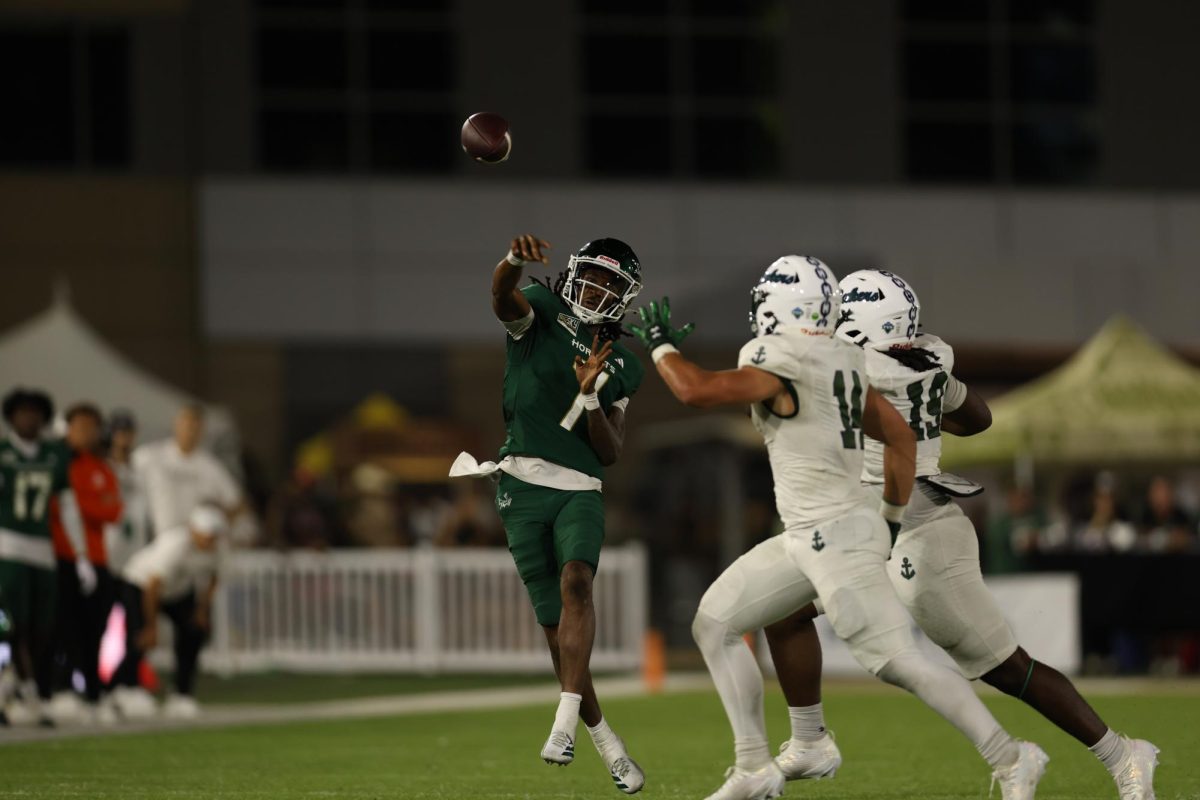






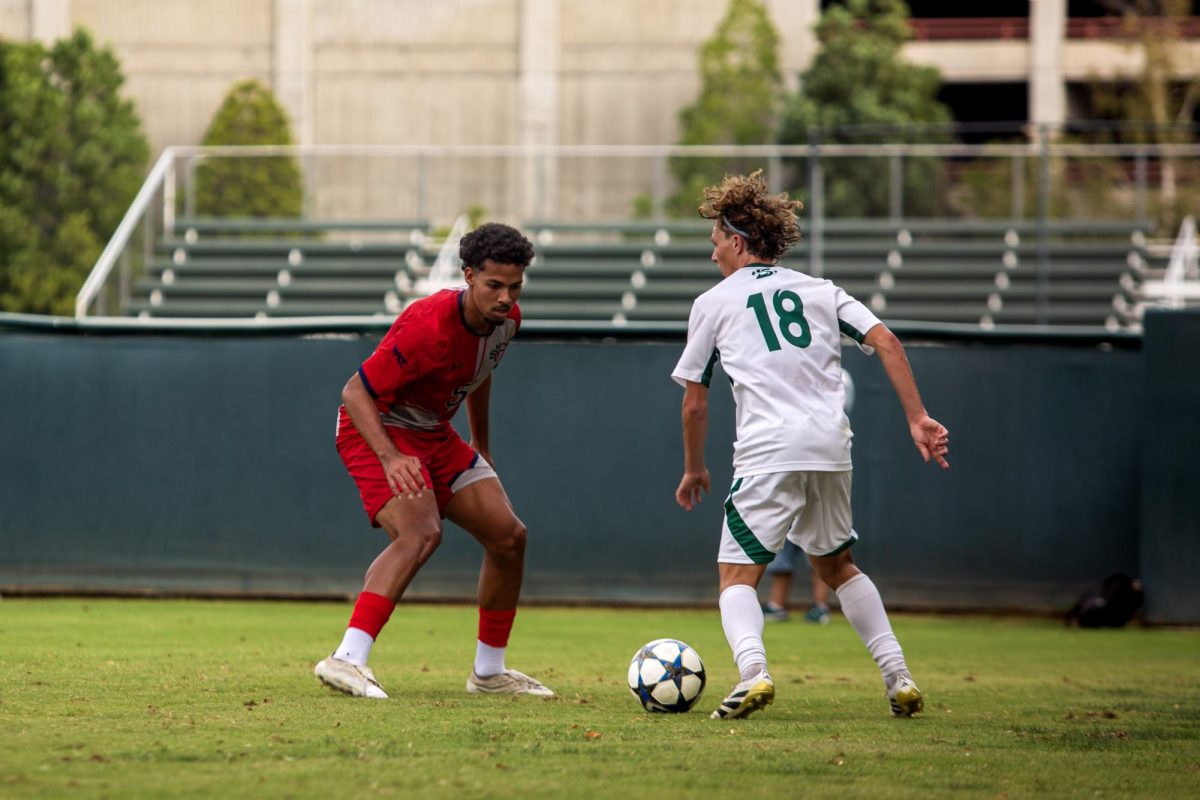





















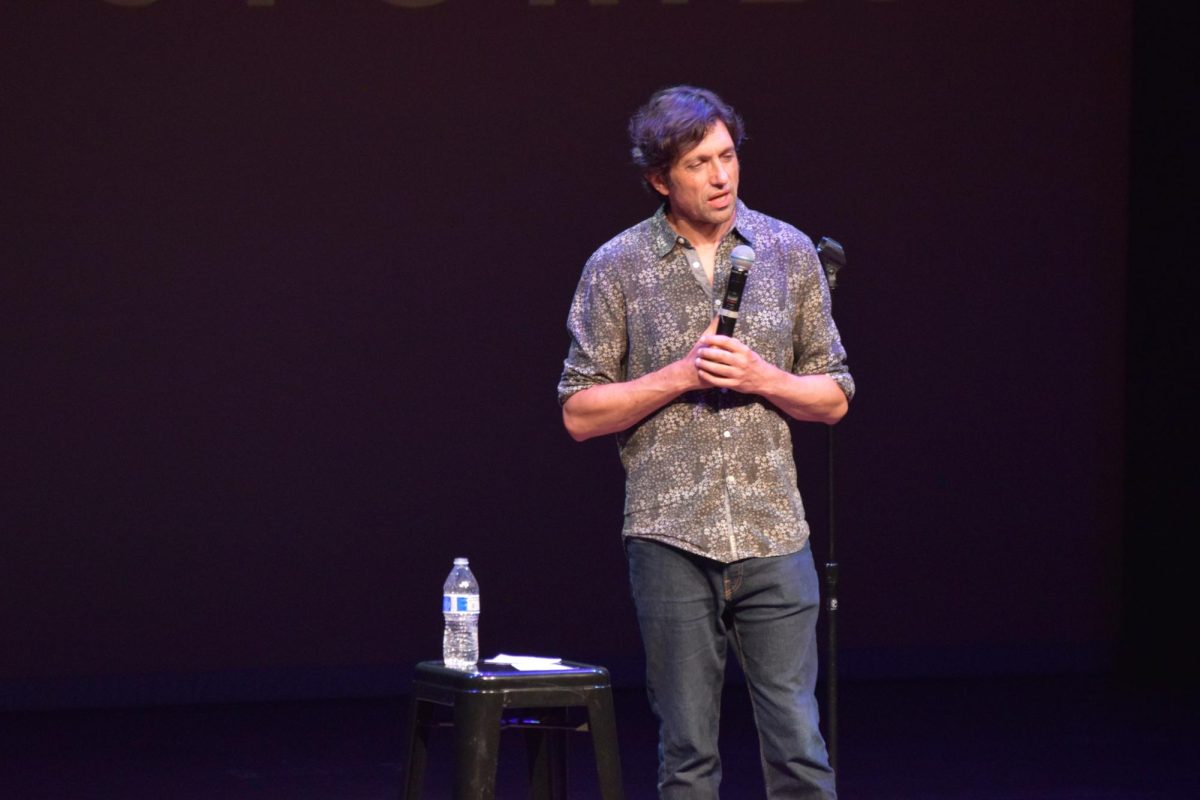




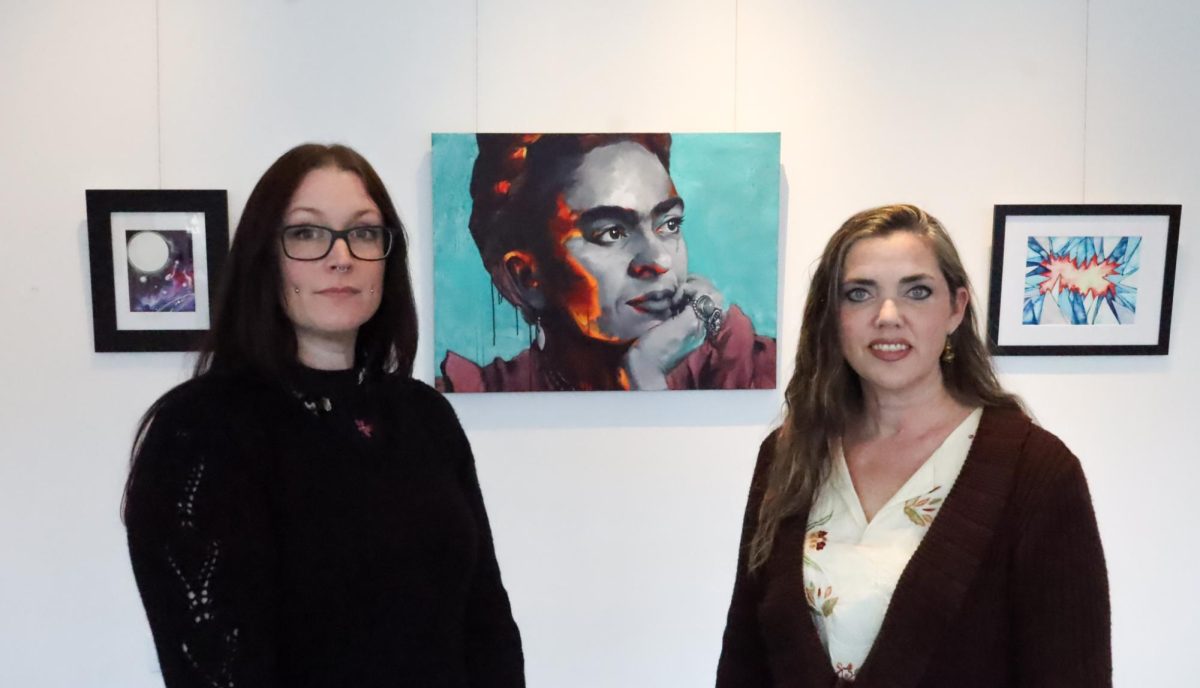


































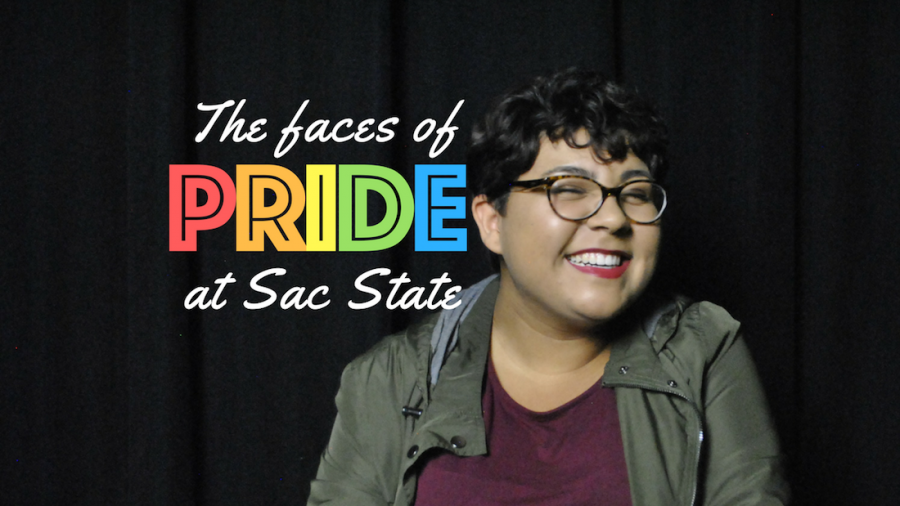
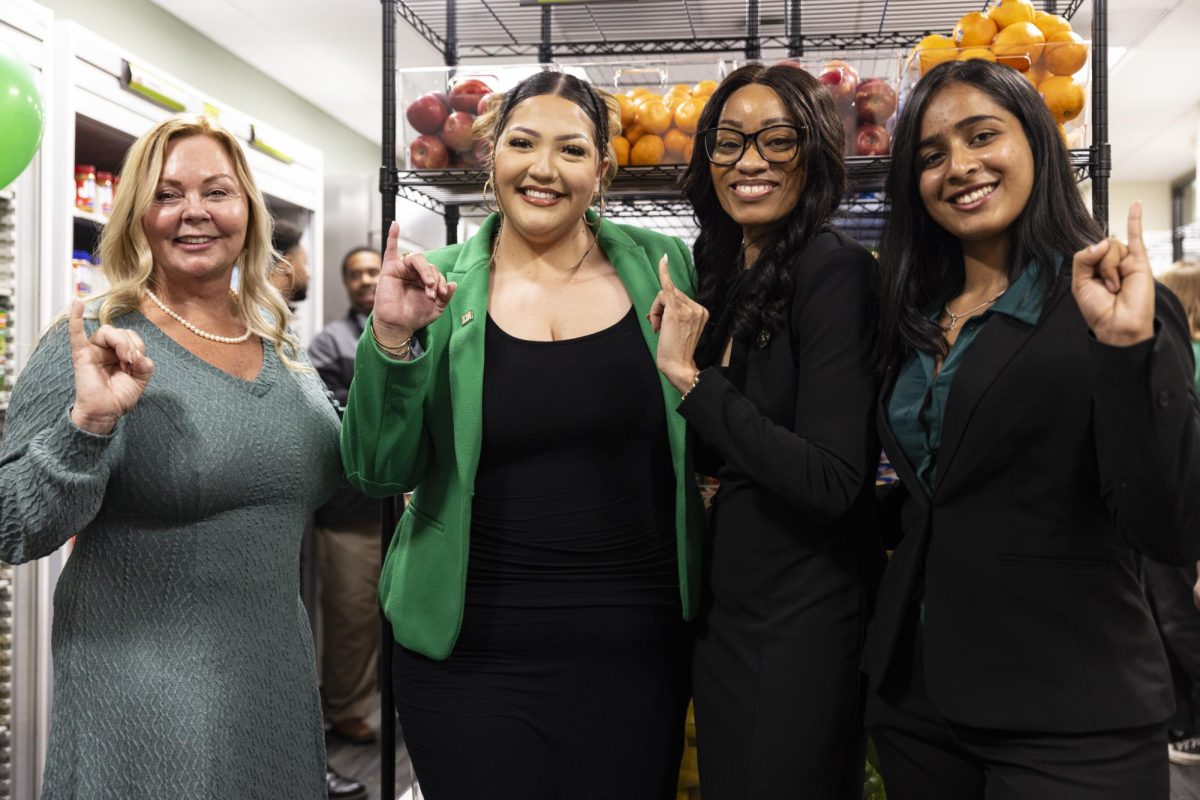
Vanessa Walling-Sisi • Apr 14, 2017 at 11:10 am
Billy Hale left a great legacy behind at her high school by starting a GSA! I know, because I’m the teacher advisor she asked to start the club with…and it’s still going strong today! These LGBT leaders continue to have an impact on people they have encountered on their paths.